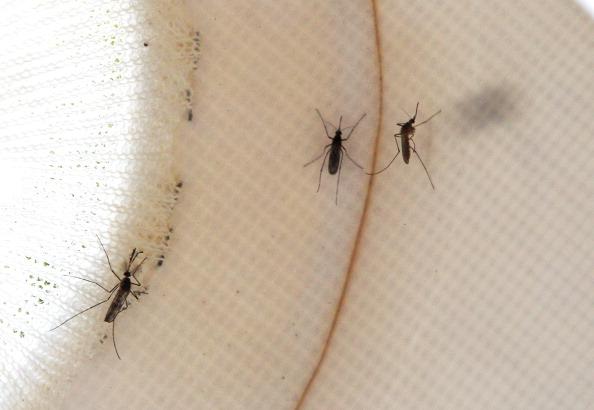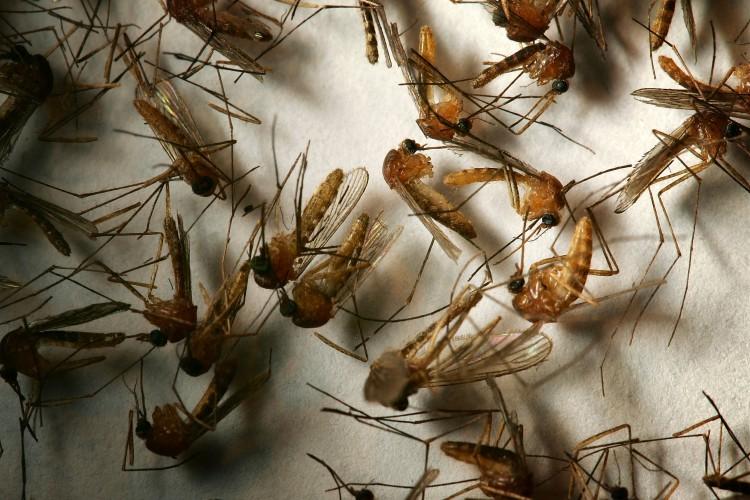This year may be the worst-ever West Nile outbreak in U.S. history, but most cases came from just a handful of states. The highest concentration of severe infections was found in Texas.
Experts say the hot, sticky Texas summer led to nearly 45 percent of the nation’s West Nile virus (WNV) cases, but the high percentage is not only because the state’s mosquito numbers have been particularly high. According to the Centers for Disease Control (CDC), the 2012 heat wave has made for more potent insects.
In a press conference last week, Lyle Petersen, M.D., director of the CDC’s Division of Vector–Borne Infectious Diseases, said that high temperatures actually “raise the levels of virus in the mosquitoes.”
“So the hotter it is, the mosquitoes tend to become more infectious,” Peterson told reporters.
Officials say the worst is now behind us, but with several weeks of warm weather left in the year, more cases are still expected before the 2012 West Nile season comes to a close.
In July—when it became clear that 2012 would be a big year for WNV—Texas health officials began warning residents to take extra precautions. They urged wearing long-sleeved shirts, pants, and using DEET when venturing outside, and they advised staying indoors during dusk and dawn when mosquitoes are most plentiful. But even those who followed the advice still got sick.
Texas native Suzeanne Peak has been suffering from WNV since Aug. 28. Peak says she was indoors when she got stung, and more than a week later, the strong, flu-like symptoms persist.
“I still feel like I was hit by a truck,” she wrote in an email.
Peak declined a phone interview because she did not think she would be able to maintain her focus, and it is easy to see why. The stay-at-home mother of two complained of intense, splitting migraines, joint and muscle aches, swollen glands, nausea, and severe exhaustion.
The CDC says that so far this year, nearly 900 infections and 51 deaths have been reported in Texas—more than the state has ever seen. But the amount of viral-laden mosquitoes is actually much greater than the number of infections might suggest, as only a small percentage of infected people actually exhibit symptoms.
Peak said that seasonal allergies and a summer sinus infection left her vulnerable, but some experts believe that WNV risk has grown because the virus is actually getting stronger.
Steve Presley, a zoonotic disease researcher at The Institute of Environmental and Human Health at Texas Tech University and chairman of the City of Lubbock Board of Health, hypothesizes that we may be looking at a mutation of WNV that scientists have yet to identify.
Presley explains that WNV is a relative newcomer to North America—the strain NY99 was first seen in 1999. Just a few years after its arrival, researchers discovered a new strain—NY02. Presley says it is not uncommon for viruses, particularly those transmitted through arthropods, to change antigenic properties and adapt to new hosts. He suggests that this year’s high infection rate may reveal evidence of another adaptation.
“Because we’re seeing such high levels of neuroinvasive disease this year, both in the Dallas area, throughout Texas, and in the United States, it makes me wonder if another shift or drift in the antigenic properties of the virus has occurred,” said Presley.
Peak says that for those who follow disease patterns, the 2012 epidemic should not be much of a surprise. A former EMT who has recently been brushing up on her disease study, Peak notes that conditions were “perfectly ripe.”
“It was a matter of when, not if,” she said. “Texas and the Midwest in general just had the perfect storm of circumstances all coming together to make it here and now. Eventually, a large outbreak had to happen.”
While previous years have seen relatively mild outbreaks of WNV, both Peak and Presley say that Texans have grown so used to the annoyance of mosquitoes that they have stopped considering the bug’s potential for illness.
“Dengue, yellow fever, malaria—these things are diseases of the past for most Americans,” said Peak. “And you have to face the fact that in [WNV], it’s a killer mostly of the elderly and infirm. If it was striking down healthy young adults in large numbers, there'd be a greater response.”
But recent developments may give more cause for concern.
According to researchers, several zoonotic diseases—those that pass from animals to humans—are on the rise. In addition to growing WNV numbers, Presley points to more recent cases of St. Louis encephalitis, Hantavirus, tularemia, and even plague.
“I personally believe that a lot of that is because we don’t use pesticides like we used to,” said Presley. “The pesticides that we used to use were much more effective for longer periods of time, but because of concern of humans being exposed to intoxicants, we’ve altered and we’ve lessened the toxicity of a lot of the pesticides that are available.”
Texas has implemented a statewide spraying program to address the growing concern for WNV, but Presley believes that it is a case of too little, too late.
“I think it was probably as effective as you could expect,” he said. “When you have to resort to aerial spraying, that means that you’re behind the curve—you’re trying to cover much larger areas much more rapidly and efficaciously.”
“The spraying program won’t work,” said Peak. “They live so close to humans that outdoor spraying won’t really get them all. Plus, it only affects mosquitoes that are actually flying through the spray.”
Presley says that, more than pesticides, source reduction is really the key to taming WNV. He says that one of the reasons West Nile has made such a strong showing in 2012 is that people have inadvertently created breeding grounds for mosquito propagation.
“It doesn’t have to be a pond, or a creek, or a lake. A Dixie cup full of water, or a tuna can, a dog food can, something like that is an adequate amount of water for mosquitoes to breed in,” he said. “And when temperatures are as high as they’ve been, in the sweltering dog days of summer, the amount of time it takes them to go from the egg to the larvae through the pupae to emerge as adults is much shorter compared to cool temperatures. ”
Peak said the big numbers of the 2012 WNV outbreak should get people to take the threat of zoonotic diseases more seriously. Presley agreed. He said that growing complacency has likely contributed to the recent spike of recorded cases.
“If there’s not the perception in a public that it’s a major threat—whether it’s West Nile virus or St. Louis encephalitis, any of the mosquito-borne viral pathogens—people tend not to worry about it too much,” said Presley. “I think it’s a thought process. If the threat is not at the forefront of their mind, it’s easy to forget it or neglect it.”
The Epoch Times publishes in 35 countries and in 19 languages. Subscribe to our e-newsletter.







